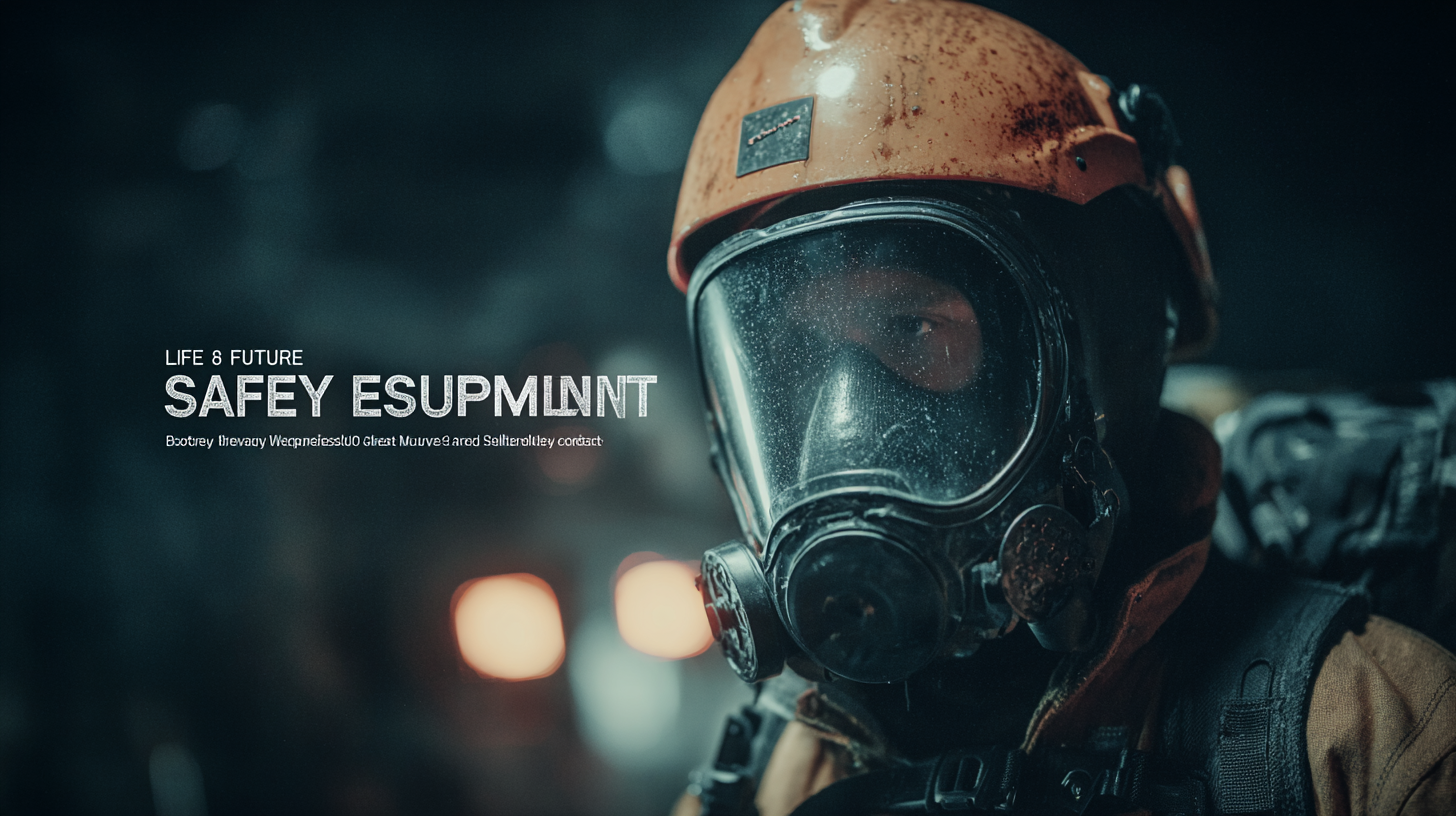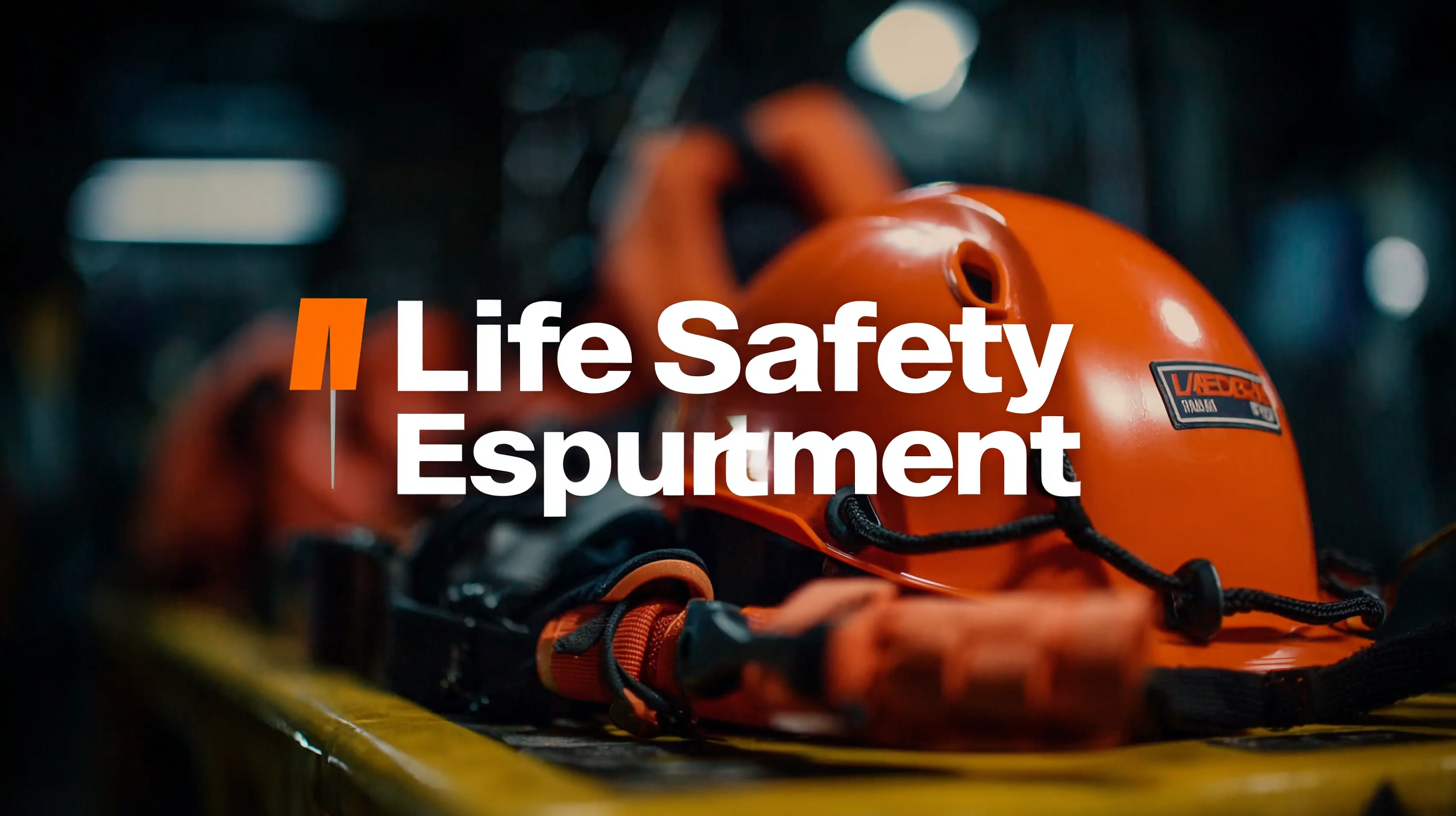Embracing the Future: How Best Life Safety Equipment Will Transform Workplace Safety by 2025
In the rapidly evolving landscape of workplace safety, the significance of Life Safety Equipment cannot be overstated. As we approach 2025, projections indicate that the global market for safety equipment is expected to reach approximately $23 billion, growing at a CAGR of about 7.5% from 2020 to 2025 (Market Research Future). This growth is driven by increasing regulatory measures and the rising need for improved safety protocols in diverse industries.

A report by the National Safety Council highlights a staggering 10% increase in job-related injuries since 2018, emphasizing the urgency for organizations to invest in advanced safety solutions. The integration of innovative Life Safety Equipment not only safeguards employees but also enhances operational efficiency and compliance. As we delve into the transformative potential of these advancements, it is essential to explore how businesses can effectively adapt their safety strategies to meet the demands of the future workplace.
Impact of Import and Export Certifications on Life Safety Equipment Standards
The importance of import and export certifications in ensuring high standards of life safety equipment cannot be overstated, especially as we move toward 2025. As global markets for safety equipment expand, adherence to rigorous certification processes becomes essential. These certifications not only validate the safety and reliability of equipment but also play a pivotal role in aligning products with the regulatory frameworks of various countries. The recent updates to food safety measures and sanitary controls illustrate how rapidly evolving standards can shape market access and consumer trust.
Furthermore, the discussions surrounding the Omnibus Technical Regulations (OTR) highlight an innovative approach to machinery and electrical equipment safety. These regulations aim to streamline safety protocols across international borders, ensuring that only certified products are utilized in workplaces. This paradigm shift will significantly enhance workplace safety by guaranteeing that all imported and exported life safety equipment meets stringent safety benchmarks, ultimately leading to a safer working environment as organizations adopt the best available technologies and practices.
Key Technological Innovations in Life Safety Equipment by 2025
The landscape of workplace safety is set to undergo significant transformation by 2025, driven by key technological innovations in life safety equipment. According to a recent report by the Global Safety Equipment Market, the sector is projected to reach $55.5 billion by 2025, indicating a robust growth fueled by advancements in safety technology. One of the most notable innovations is the integration of IoT (Internet of Things) devices into safety equipment. These smart devices can monitor environmental conditions in real time, alerting workers to potential hazards and allowing for proactive measures to be implemented.
Additionally, the use of augmented reality (AR) is poised to revolutionize training and response strategies. A report from the Occupational Safety and Health Administration (OSHA) suggests that AR training programs can improve retention rates by up to 75%, greatly enhancing the preparedness of employees in emergency situations. As companies begin to adopt these technologies, the focus on employee well-being and safety will not only comply with regulatory standards but also foster a culture of safety that empowers workers and ultimately increases productivity. As we advance towards 2025, the significance of these technological innovations cannot be overstated; they promise to redefine the standards of workplace safety for the better.
Embracing the Future: Key Innovations in Life Safety Equipment by 2025
The following chart illustrates the anticipated advancements in life safety equipment technologies by 2025. The data reflects the projected adoption rates of key innovations in workplace safety, focusing on enhancements like smart alarms, automated system integrations, real-time monitoring, and advanced personal protective equipment (PPE).
Regulatory Changes Affecting Workplace Safety Equipment Market
As the regulatory landscape surrounding workplace safety continues to evolve, the demand for advanced life safety equipment is expected to surge. A recent report by the National Safety Council indicates that the workplace safety equipment market could witness a compound annual growth rate (CAGR) of 5.6% by 2025, driven primarily by stringent regulations aimed at reducing occupational hazards. These changes are not only shaping the products available but also encouraging companies to invest more in compliance-oriented safety equipment.
In the wake of these regulatory changes, businesses are advised to conduct regular audits of their safety equipment to ensure compliance with the latest standards. For instance, the Occupational Safety and Health Administration (OSHA) has updated guidelines that emphasize the importance of having certified protective gear. Prioritize sourcing equipment that meets these new standards to avoid potential fines and enhance employee safety.
Additionally, organizations should consider implementing comprehensive training programs on new safety protocols as equipment evolves. Reports from the Institute for Safety and Health Management suggest that training not only increases compliance rates but also fosters a culture of safety within the workplace. By preparing employees for the upcoming changes, companies can leverage improved safety equipment to create a safer work environment that aligns with regulatory demands.
Case Studies: Successful Implementation of Certified Safety Equipment
The implementation of certified safety equipment in workplaces is not just a regulatory requirement but a strategic move that enhances employee welfare. According to the National Safety Council, businesses that adopt comprehensive safety measures can reduce their injury costs by up to 20%. A notable case study from a manufacturing plant that integrated advanced safety equipment like automated machine guards and real-time hazard alert systems reported a 35% decrease in workplace accidents over two years. Such statistics underscore the critical role that certified safety gear plays in creating secure environments.
Moreover, a 2023 report from the Occupational Safety and Health Administration indicates that companies utilizing certified life safety equipment experience significantly lower insurance premiums, potentially saving up to 15% annually. An exemplary case in the healthcare sector revealed a hospital that adopted personal protective equipment (PPE) compliant with the latest industry standards, resulting in a 50% reduction in staff-related injuries and illnesses. By investing in certified safety measures, organizations not only protect their workforce but also enhance operational efficiency, thus paving the way for a safer and more productive workplace by 2025.

Future Trends in Life Safety Equipment and Workplace Safety Practices
As we look toward 2025, the landscape of workplace safety is set to undergo significant transformations driven by advancements in life safety equipment. According to a report by the National Safety Council, workplace injuries cost U.S. businesses over $161 billion annually. As companies increasingly adopt smart technology, the integration of IoT (Internet of Things) devices into safety protocols promises to enhance real-time monitoring and response capabilities. For instance, wearable safety gear equipped with sensors can alert workers and management to potential hazards, dramatically reducing the response time during emergencies.

Another critical trend is the rise of personalized safety equipment tailored to specific job roles and environments. A study from the American Industrial Hygiene Association highlighted that 80% of workplace accidents are linked to human error, which underscores the need for customizable safety solutions. Innovations such as AI-driven risk assessments and personalized training apps not only foster a culture of safety but also empower employees to take proactive measures to safeguard their well-being. As organizations gear up for the future, investing in cutting-edge life safety equipment will be pivotal in preventing workplace injuries and cultivating a safer work environment for all.
